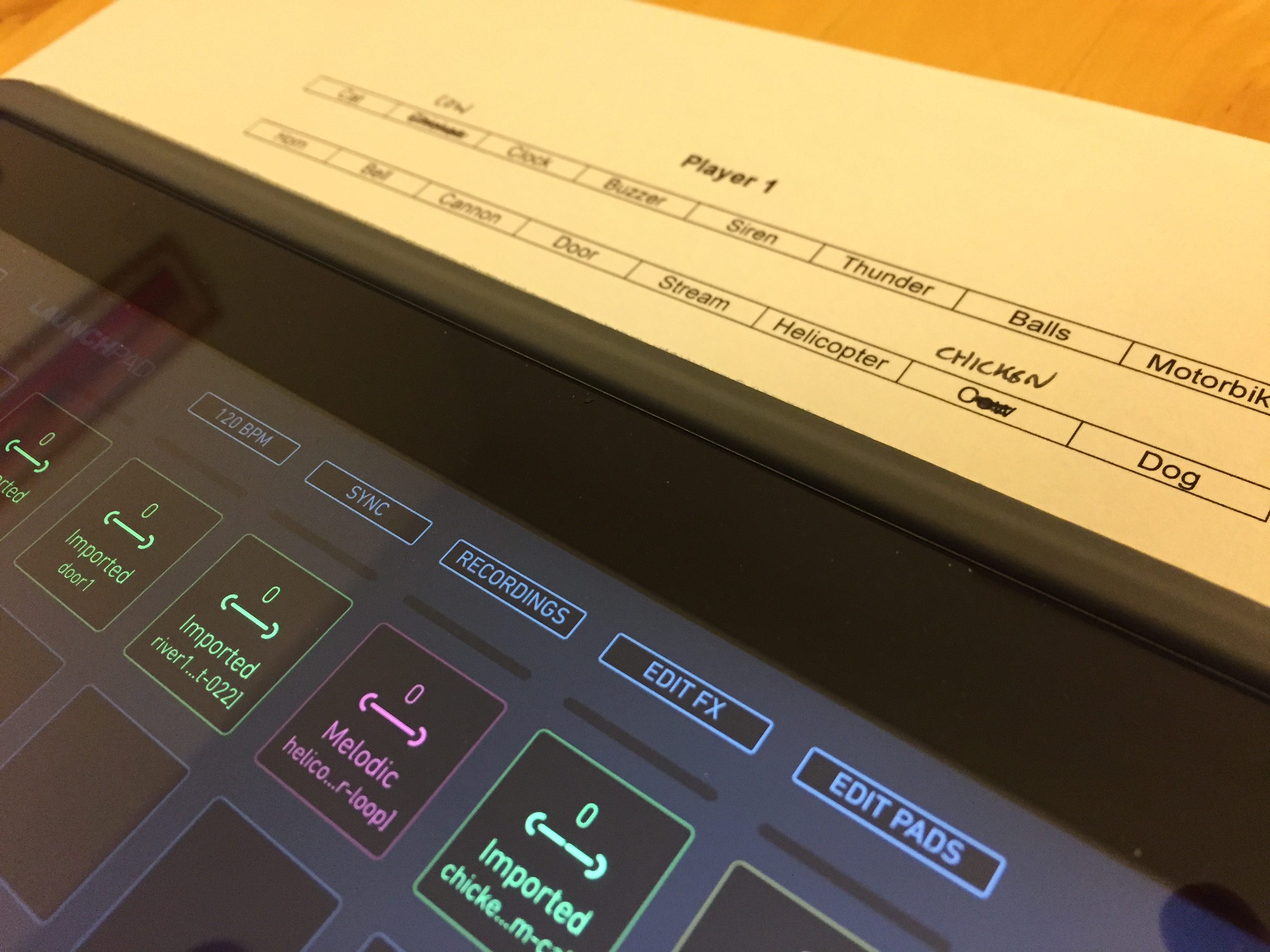I don’t have a title for my new orchestra piece yet, but it explores cognitive load and the way we remember associations between pairs of unrelated elements. Cognitive load is the amount of mental effort needed to remember things in different situations. An example of it in practice is the children’s party game where a tray of objects is displayed before being hidden, and then participants are asked to remember as many of the items as possible. The difficulty of this task is affected by the number, type and arrangement of the objects. My new piece draws on two previous pieces, like you and like you (2015) and in which one thing depends on another (2016). In like you and like you, three players each have 24 sound producing objects and 24 samples that relate to them in some way (e.g. a cap gun and recording of a cannon). Players copy each other, so when one player rings a bell, the other two players must ring their bell, or play their bell sample. This sets of chains of association. In in which one thing depends on another, two players each have a set of 10 objects and 10 words. They work together to pair each of their own words with each of the other player’s objects, learning, teaching and testing each other in a gamelike way.
The new orchestra piece takes elements of these two pieces and scales them up for the larger ensemble. At the moment it looks like there will be six cueing players who have a combination of 24 words, objects and samples that are used to instruct the orchestra. Each cue is arbitrarily linked to a major or minor triad. The cueing players deliver their cues in a playful way, developing sequences and associations (for example between gun – dog – whistle). The orchestra must play the relevant pitches as quickly as possible on hearing each cue, so the resultant texture is a map of the speed of response of the individual players. The cueing players play with this situation, making it harder or simpler for the orchestra to respond correctly. The orchestra also have a way to affect the resulting sounds which I’m working on at the moment. We trialled some of these mechanics in the Open Scores Lab meeting on 2 November, and it seems to work with a small group effectively.
I’m still thinking about how environments such as this relate to games. There are local goals for the orchestra players – that of responding to the cues as quickly as possible – but there is no win state. The cueing players act as an external force that creates the space for the orchestra players to respond, but again they have no explicit purpose other than creating engaging associations and lines of force. It’s possible to set up some goals potentially, but I’m drawn to the sense of open-ended play that’s apparent when players are let loose with these constraints and resources (as in the things to do pieces). That said, having a purpose is becoming increasingly important to me in developing gamelike pieces, have begun to think more about values as a result of reading Mary Flanagan’s book on game design. It might still find a way into this piece.

Leave a Reply